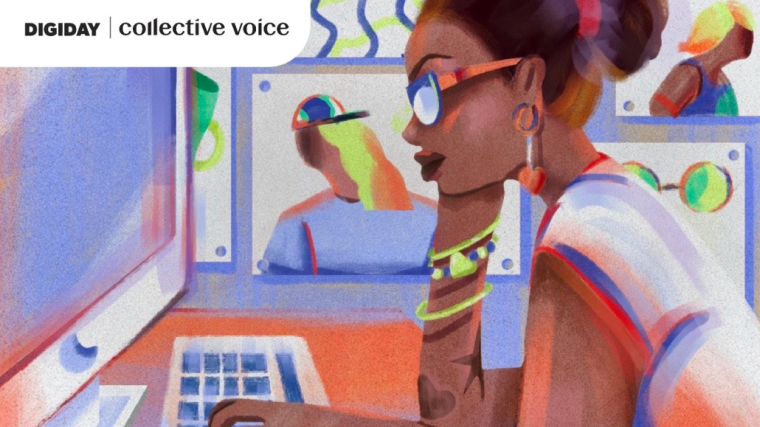
This Tactics + Insights guide, sponsored by creator marketing platform Collective Voice, examines how brands work with creators to reach and engage audiences across multiple touchpoints and channels. As the sales funnel has evolved to be non-linear, creators are essential for brands to reach consumers throughout all customer journey stages.
Brands are tapping creators to produce effective, authentic content that gives marketers access to new audiences, drives sales and unlocks long-term partnerships.
Traditionally, the marketing funnel was a linear journey covering awareness, consideration and purchase. However, digital media, including creator marketing, has changed how consumers engage with brands across multiple touchpoints and channels, introducing unanticipated shortcuts and on- and off-ramps in what used to be a straightforward path.
Unlike traditional brand messaging, influencers establish these authentic audience connections through more informal word-of-mouth. Creator marketing is growing 3.5 times faster than traditional social ad spending, but as brands invest in the channel, some need help achieving value and impact throughout their sales funnel.
In a recent sponsored webinar hosted by Digiday, creator marketing platform Collective Voice and its partners discussed how creator marketing impacts performance across the sales funnel.
“Prioritizing trust and authenticity is extremely critical for brands understanding how to use creators to help drive cultural equity and leverage that authority to drive the customer journey,” said Lindsay Jerutis, general manager at Collective Voice.
In this Tactics + Insights guide, encompassing the takeaways of the co-branded webinar, Digiday and Collective Voice examine how brands are expanding the role of creator content in their marketing mix and working with creators to address audiences across the full funnel. As marketers increase and optimize their investments in influencer, UGC and other creator content, they’re seeing their efforts pay off.

According to Jerutis, creators play a role in the evolution of the sales funnel by bridging advertiser-to-audience connections and influencing audiences in journeys that resemble an infinity loop.
Brands like Saks are accounting for this more integrated customer journey by changing their approaches to creator collaborations and the media mix. This reflects a broader trend as marketers ramp up their investments in creator partnerships. According to research from IAB, 83% of U.S. marketers expect to use creator marketing in 2024, and 44% of advertisers plan to increase their investment in creator content.
“As luxury fashion moves online in a much bigger way, it has allowed us to evolve our approach to digital marketing,” said Cathy Chen, vice president of growth marketing at Saks. “We’ve been more focused on investing toward the bottom of the funnel in digital marketing in years past. As the customer journey has evolved, we’re much more focused on the full marketing funnel and addressing every point in that infinity loop.”
This strategy shift has allowed Saks to invest differently in mid- and upper-funnel initiatives, including working with creators specializing in storytelling to move the needle on brand consideration.
“As we learn how to approach the mid- and upper-funnel, creators are excellent at storytelling in a way that, as a brand, we’re still learning,” Chen said.
Saks partnered with Collective Voice to collaborate with several creators to strengthen brand awareness, increase sales and drive customer acquisition.
Among these creators is Shana Draugelis, founder of The Mom Edit, where Draugelis prioritizes brand collaborations centered around shared values and authentic storytelling.
Initially, the distance between a creator like Draugelis, who focuses on accessible fashion, and the luxury products Saks sells might appear too wide for a partnership to work. However, Jerutis and the team at Collective Voice identified Draugelis as a partner for the retailer because of the organic appeal and performance of Saks’ content on The Mom Edit.
“We have a unique position to help both brands and creators maximize a relationship because of the data and the proprietary tools that we have to see the opportunity,” Jerutis said. “A lot of times, we’ll uncover opportunity where it didn’t appear in the beginning.
“Those kinds of insights can be so valuable for the creator as well as the brand in terms of understanding what’s resonating with audiences,” Jerutis said. “The cart insights help us make better content and better experiences that are more collaborative.”

For example, the first collaboration between Saks and The Mom Edit was centered on shoes, coinciding with a sale at the retailer. In this case, given The Mom Edit’s familiarity with — and affinity for — Saks’ denim selection, Draugelis also featured two pairs of Saks jeans in the article, as well as a luxe T-shirt.
“We angled the article to make sure that we were appealing to what we knew our audience would resonate with,” Draugelis said. “Collective Voice has always supported the different directions I want to go in for collaborations.”
The featured jeans ended up selling out, demonstrating that Draugelis’ instincts about what her audience was interested in buying were correct. Collective Voice’s cart insights, which examine in depth what specific products are added to a consumer’s cart from an affiliate link, supported the assertion that the shoe placement also drove sales of an adjacent product.
According to Chen, insights from Collective Voice have also helped Saks improve its approach to creator partnerships by offering creators more campaign context and creative flexibility.
For instance, early in their collaboration, Saks informed The Mom Edit that the retailer wanted to position itself as more than a destination for special occasions. This context helped determine The Mom Edit’s creative approach to the collaboration.
“We provide direction and guidance to our creator partners, but we’ve learned through direct feedback and testing to give creators more leeway in what they feature and how they talk about it to their audiences,” Chen said. “We see the impact in our campaign results. It’s a very different approach to how we work with creators today versus how we did when we started. It’s learnings like that through our partnership with Collective Voice that continue to optimize and improve all of our marketing campaigns today.”
While creator partnerships drive brand engagement and sales across multiple touchpoints in the infinity loop, the complexity of the digital sales funnel adds urgency to the imperative of measuring campaigns and outcomes with greater nuance to determine whether — or how — a brand’s partnerships are working.
Attribution is complex, and that will only grow with the ongoing deprecation of third-party cookies. However, holistic metrics and data, such as tracking gross merchandise value and average monthly orders over time, showcase the halo effect of influencers beyond immediate clicks or sales.
Brand lift studies, which measure factors like consideration and perception, are critical for understanding how creators drive brand affinity and loyalty. These studies also shift the focus from measuring the ROAS from a single campaign to quantifying the long-term impact of ongoing creator efforts.
“As we move up the funnel in the creator marketing space, measurement has to be very different in terms of what we’re looking at,” as opposed to traditional marketing modeling and incremental ROI, explained Chen. “Given these newer goals of ours, these brand lift studies allow us to look at these upper-funnel KPIs that help us understand if we’re moving the needle when it comes to brand perception and consideration.”
And time is a factor as well.
“We know that influencers and creators drive brand advocacy and loyalty much beyond the last click they get credit for,” Jerutis said. “Especially when it comes to a luxury purchase or something like skincare that is very personal, it’s going to take a long time and many touchpoints to influence a final trigger for purchase.”
From the creator’s perspective, Draugelis has found that it takes about a year to create brand loyalty from The Mom Edit audience. Along the way, to gauge whether the featured brands and products resonate with the audience, The Mom Edit tracks ROI, sales and click data.
While clicks show reader interest, products with high clicks and low sales indicate something is amiss. This may mean a price point is too high, the brand is not the right fit or a product sold out quickly.
The Mom Edit also uses Collective Voice’s API to build custom dashboards that track sales across placements like blog posts and videos.
For brands to maintain the momentum of their creator partnerships, they must balance short-term results and long-term impact.
“You want to make sure that you’re investing in creators over time so that brands can leverage their evolving influence in their evolving audience to maintain continuity in their marketing efforts,” Jerutis said. “We recommend empowering creators, nurturing those long-term relationships and making them an integral part of your strategic plans.”
As the creator economy and digital marketing ecosystem have evolved, more brands are developing internal creator marketing teams. However, brands of all sizes can benefit from working with external creator platforms.
These creator platforms allow internal teams to expand their knowledge base to include audience trends across platforms and categories. They can also leverage sophisticated measurement tools to go beyond last-click attribution.
In addition, creator platforms help generate insights to identify and better facilitate collaboration opportunities between brands and creators that resonate best with target audiences.
“What makes a successful partnership is collaboration, trust and authenticity, but it’s hard to make those things happen without everyone solidifying and agreeing to a set goal,” Jerutis said. “If you want to be able to touch the entire funnel and understand all the different ways in which audiences are going to become brand advocates and lifetime customers, it’s going to take clear direction and a collaborative, long-term relationship to foster that.”
Collective Voice is the ultimate partner for all things Creator Marketing—providing everything you need to take on all those big growth moments.
Since launching in 2008, they’ve been at the forefront of the Creator Marketing industry. Leveraging their deep expertise, they build meaningful relationships between Marketers and Creators, supporting them with services and expertise so they can grow and thrive together.
Their intuitive platform enables Creators to monetize their content through affiliate links and brand partnerships, while gaining in-depth insights and access to an expansive network of retailers. Brand partners benefit from a curated database of high-performing Creators, robust analytics, dynamic content collaborations, and affiliate opportunities. They have everything Creators and Marketers need to succeed, make impactful content, and monetize.














